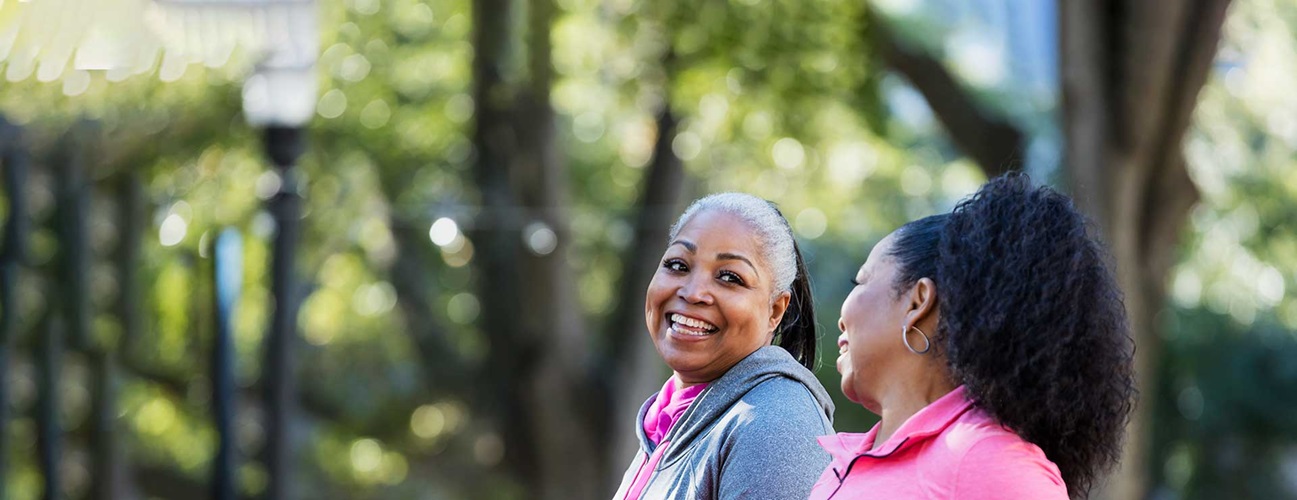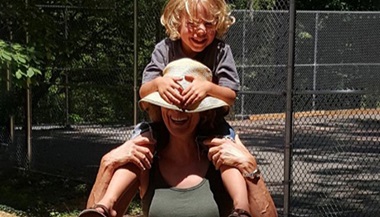Breast Reconstruction
What You Need to Know What You Need to Know About Breast Reconstruction
- Breast reconstruction may be done for one or both breasts. This surgery can be immediate, along with a mastectomy, or delayed, which means it will done after mastectomy recovery is complete.
- There are two main types of reconstruction surgery: expander-implant or autologous tissue.
- Your board-certified plastic surgeon will discuss factors that can affect which option is best for you.
What is breast reconstruction?
Breast reconstruction is surgery to create a new breast in place of a breast that has been removed by mastectomy. A breast mound is created that comes as close as possible to the shape and look of a natural breast. Surgeons strive to preserve as much of your own skin as possible.
The surgery may be done to reconstruct either one breast (unilateral) or both breasts (bilateral). The goal of the surgery is to create a breast mound that matches the opposite breast. It is important to seek out a board-certified plastic surgeon for this procedure.
Who might be a candidate for breast reconstruction?
The decision to have breast reconstruction is a personal one. It depends on how you think you will feel after a mastectomy. If you think you would feel uncomfortable with a flat chest or wearing a prosthesis, you may want to consider breast reconstruction. However, if you don’t want to have any more surgeries, you may not want to do it. You can always choose to have the breast reconstruction surgery after you have healed, or even years later. Having breast reconstruction does not increase your risk of getting cancer.
Your doctor will talk with you about factors that can affect what type of surgery will work for you. These include:
- The amount of tissue removed from the breast(s)
- If your chest tissue has been affected by radiation therapy, prior surgeries or aging, this may affect your outcome after reconstructive surgery.
- Your overall health and health history. For example, patients who smoke, have obesity or have diabetes may have increased risk of complications, which may affect your reconstruction plan to maximize safety.
Patient Stories
Lauren’s Story | A Go-getter’s Advice? Go Get Your Mammogram
Amy’s Story | Taking Back Control with a Preventative Double Mastectomy
What are the types of breast reconstruction?
There are two main types of reconstruction surgery:
- Expander-implant. This method uses a temporary breast implant called a tissue expander to create a breast mound. This may be followed by the placement of a breast implant.
- Autologous tissue. This method uses your own body tissue to construct a new breast mound. These reconstructive surgeries leave you with two surgical wounds: the breast and the site where tissue was removed, which is often the abdomen. This is called a deep inferior epigastric artery perforator (DIEP) flap, and is the most common autologous approach.
You may also decide to have other procedures to improve how your new breast shape looks. For example, you might decide to have reconstructive surgery on your other breast so that it matches your new breast shape. Or, you may want to have a nipple or areola constructed, if your nipple is not able to be spared with the mastectomy.
Expander-implant surgery
Expanders are empty implant “envelopes” placed either over (pre-pectoral) or under the pectoralis muscle (sub-pectoral). This muscle is between the breast and the chest wall. To enable the skin and soft tissues of the breast to stretch, the expander is filled with saline solution over several weeks. The saline is injected into the expander through a valve or port in the expander that lies just under the skin.
Once the expander has been completely filled, it is left in place over a period of time, during which the healing allows for maximum skin and soft tissue stability. Once the skin has stretched enough, a second surgery may be done to remove the tissue expander and insert the permanent implant in the same space that the expander is.
Breast implants may be filled with saline or silicone gel. Each type of implant filling has advantages and disadvantages. Your doctor will discuss the types of implants with you and help you decide which type to use.
Autologous tissue surgery
- DIEP (deep inferior epigastric perforator) flap is the most common autologous method. With this method, the surgeon takes fat and skin (but not muscle) from your lower belly and uses it to create a breast mound(s). The abdomen is then closed in a fashion similar to a tummy tuck incision, which is longer than a c-section.
There are other options for this surgery, including:
- TRAM (transverse rectus abdominous muscle) flap. An area of fat, skin and muscle is removed from the belly (abdomen) and moved to the chest. This surgery is similar to a DIEP, except that the whole muscle is removed. This places you at slightly higher risk for abdominal bulge or hernia, and may require mesh to support the abdominal wall. The scars are similar to a DIEP. Usually, a patient’s anatomy would indicate if this is the preferred surgery.
- Latissimus dorsi flap. This method moves muscle, fat, blood vessels and skin from your upper back to your chest. Sometimes an implant is also needed with this surgery.
- TUG (transverse upper gracilis) flap/PAP (profunda artery perforator) flap. In these procedures, muscle (TUG) and fat is taken from the upper, inner thigh and moved to the chest. PAP flaps spare the muscle, and the scars are hidden on the inner thighs. This method may require removing muscle and fat from both thighs to reconstruct one breast.
- Gluteal free flap (I-GAP or S-GAP). The surgeon removes part of the skin, muscle and fat from your buttocks, and grafts it onto the chest. This is a more complex surgery. It is sometimes done with two teams of surgeons. One team may remove the flap, and the second prepares the blood vessels.
Webinar: Understanding the Breast Reconstructive “Ladder”
When is the best time to have breast reconstruction?
You and your doctor will determine the best time for you to have breast reconstruction surgery.
- Immediate reconstruction. This is reconstructive surgery done at the same time as the mastectomy. This means you will have one surgery to both remove and create a new breast.
- Delayed reconstruction. This is a surgery done after recovery from the mastectomy. If radiation therapy is part of the treatment plan, the surgeon may advise waiting until after radiation is finished.
Regardless of your surgery timing (immediate vs. delayed), most reconstructions will require some small revisions at a later date to improve the shape, contour or final outcome.
Here are some things to keep in mind regarding the best time to schedule your procedure:
- Any other treatments you are having. If you’re getting radiation after your surgery, you may need to postpone breast reconstruction or have a temporary tissue expander placed to maintain the skin envelope during radiation. Radiation to the final reconstructed breast can increase the chance of problems.
- The condition of your skin. If you have medical factors that affect your ability to heal the mastectomy incision, you may need to delay reconstruction. For example, the skin of women who smoke or who have diabetes may need extra healing time before reconstruction.
- Your emotional and psychological well-being. Some experts think that waking up from a mastectomy with the reconstruction already started is less traumatic than waking up without a breast for those women who want reconstruction.
Common risks of breast reconstruction
Any type of surgery has risks. The risks of breast reconstruction include:
- Bleeding
- Fluid collection in the surgical area (called a seroma)
- Problems healing
- Bruising and swelling
- Infection
- Blood clots
- Excessive scar tissue
- Loss of sensation
- Problems related to anesthesia used during surgery
- Problems related to the breast implant
The most common long-term complication of breast reconstruction done with implants is capsular contracture. This occurs when the scar (capsule) around the implant begins to tighten. In some cases, a second surgery is needed to fix this problem.
Patient Stories
Shanikka’s Story | From Devastation to Amazement After Deep Flap Surgery
Emily’s Story | DIEP Flap Breast Reconstruction – Prosthetic Nipples Optional
Healing After Breast Reconstruction Surgery
It’s important to know that breast reconstruction requires staged procedures, and it can take up to 6-12 months before the final results of breast reconstruction can be seen. Be patient as your body heals. Research shows that women who desire breast reconstruction have improved quality of life in many aspects. They report feeling more confident and having improved body image and feelings around intimacy and sexuality.
Reconstructive Surgery After Breast Cancer

This type of surgery requires not just a skilled and experienced surgeon but also a team of doctors and nurses who treat breast cancer. Johns Hopkins plastic and reconstructive surgeons specialize in complex breast reconstruction procedures and have successfully completed reconstructions for hundreds of women, restoring their self-image after cancer treatment.










